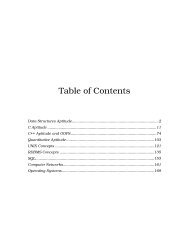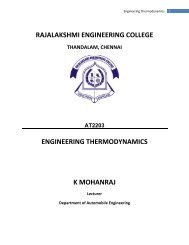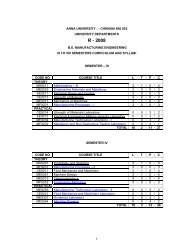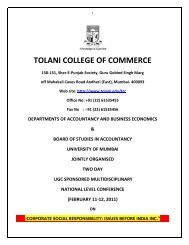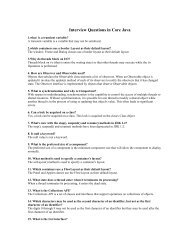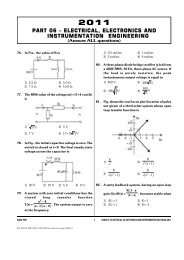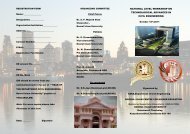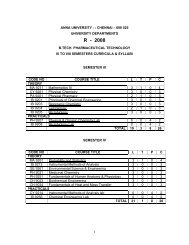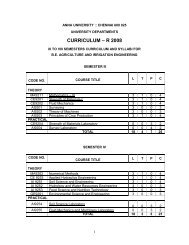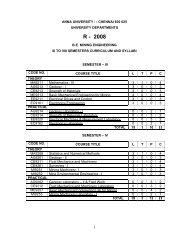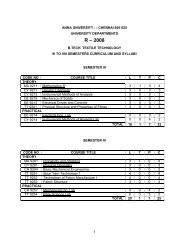b.tech. ceramic technology - Technicalsymposium
b.tech. ceramic technology - Technicalsymposium
b.tech. ceramic technology - Technicalsymposium
You also want an ePaper? Increase the reach of your titles
YUMPU automatically turns print PDFs into web optimized ePapers that Google loves.
CT9037 NON DESTRUCTIVE TESTING L T P C3 0 0 3AIMThe course is aimed to enable the students to have a basic knowledge about thevarious non-destructive methods of testing.OBJECTIVESOn completion of the course the students are expected to Have studied the basic concepts of non-destructive testing and surface NDTmethods Have learnt about small business and preparation of feasibility chart. Have a basic knowledge about establishment of a business. Have learnt about how to manage a business unit. Have some basic concepts about promotion of entrepreneurship and practicalknowledge about some case studies.UNIT I SURFACE NDT METHODS 7Introduction- Definition of terms, discontinuities and defects/flaws- fracture mechanicsconcept of design and the role of NDT- life extension and life prediction- penetrant testingand magnetic particle testing - basic principle, limitations & advantages – development anddetection of large flux – longitudinal and circular magnetization – demagnetization.UNIT II RADIOGRAPHIC TESTING 12Electromagnetic spectrum – sources - x-ray, gamma ray – x-ray generation, spectrum,equipment controls, properties, attenuation and differential attenuation- interaction ofradiation with matter – radiographic testing – principle and mechanism, recording mediumfilmsand fluorescent screens- non-imaging detectors- film radiography detectors- filmradiography- calculation of exposure for X-ray and gamma rays- quality factors- imagequality indicators and their use in radiography.UNIT III ULTRASONIC TESTING 11Ultrasonic waves- velocity, period, frequency and wavelength- reflection and transmissionnearand far field effects and attenuation- generation- piezoelectric and magnetostrictionmethods- normal and angle probes- methods of Ultrasonic testing- Principle of pulse echomethod- Equipment – examples- rail road inspection, wall thickness measurement- rangeand choice of frequency.UNIT IV EDDY CURRENT TESTING 8Introduction- principles of eddy current inspection- conductivity of a material- magneticproperties- coil impedance- lift off factor and edge effects- skin effect- inspection frequencycoilarrangements - inspection probes- types of circuit- Reference pieces- phase analysisdisplaymethods-typical application of eddy current <strong>tech</strong>niques.UNIT V OTHER METHODS 7Imaging- principle and applications- testing of composites- acoustic emission testingapplicationof AET- on-line monitoring or continuous surveillance and application in materialsscience- optical methods of NDT- photo elasticity- evaluation procedure- Holographic NDTprocedure- Speckle phenomenon- speckle interferometry-speckle shear interferometry.TOTAL: 45 PERIODSTEXT BOOKS1. B.Hull and V.John, Non Destructive Testing, McMillan Education Ltd, 1968.2. Mc Gonnagle, W.J, Non-destructing testing methods, Mc Graw Hill Co., NY, 1961.REFERENCES1. Metals Handbook, Volume 2, 8 th Edn, ASTM, Metals Park, Ohio.2. Dainty, Laser Speckle & Related Phenomena, Springer – Verlag, New York, 1984.55




